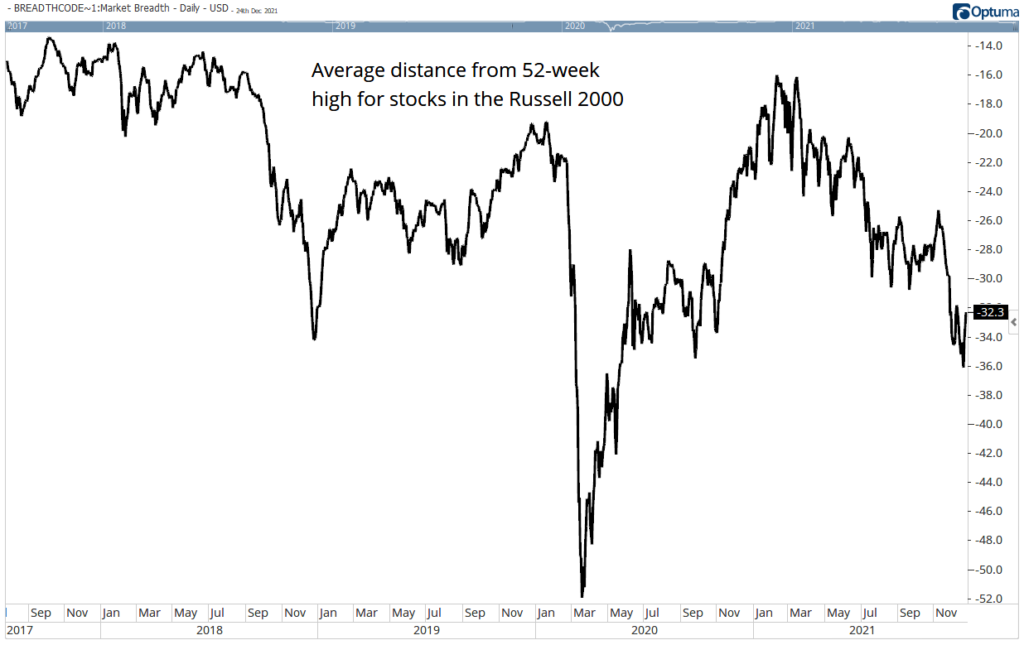A couple of weeks ago, I wrote about the stealth bear market we’re experiencing right now. As the S&P 500 sits near its all-time high, I want to show the bear market that many investors are dealing with as we close out 2021.
If investors only own an S&P 500 Index fund, they enjoy the new highs. However, 18% of stocks in the S&P 500 are at least 20% below their 52-week highs. A 20% decline indicates the minimum level for a bear market. So, almost 20% of the S&P 500 is struggling.
For small caps, the picture is far worse. Two weeks ago, I noted 60% of the stocks in the Russell 2000 Index were trading at least 20% below their 52-week highs. That’s improved somewhat, but 57% of small-cap stocks are still in bear markets.
The size of the average decline is startling, with the average Russell 2000 stock sitting 32% below its 52-week high. This measure is in a strong downtrend.
Small-Caps Are Sinking

Find Winners in the Small-Cap Bear Market
Over the last five years, the average small cap traded about 27% below its 52-week high.
All of this data confirms that there are significant opportunities in small caps. But those opportunities come with risks.
To limit the risks, I studied the characteristics of this year’s small-cap winners. Positive cash flow from operations was an important indicator of stock market returns. This is the amount of money a company brings in from its business, and it excludes money raised from investors and accounting gimmicks.
Just 67% of the companies in the Russell 2000 have positive cash flow. But 89% of this year’s biggest winners reported at least $1 in positive cash flow from operations.
As we look for winners in the riskiest sector of the market in 2022, consider cash flow. I’ll describe other factors from my research in the coming weeks.
Click here to join True Options Masters.




